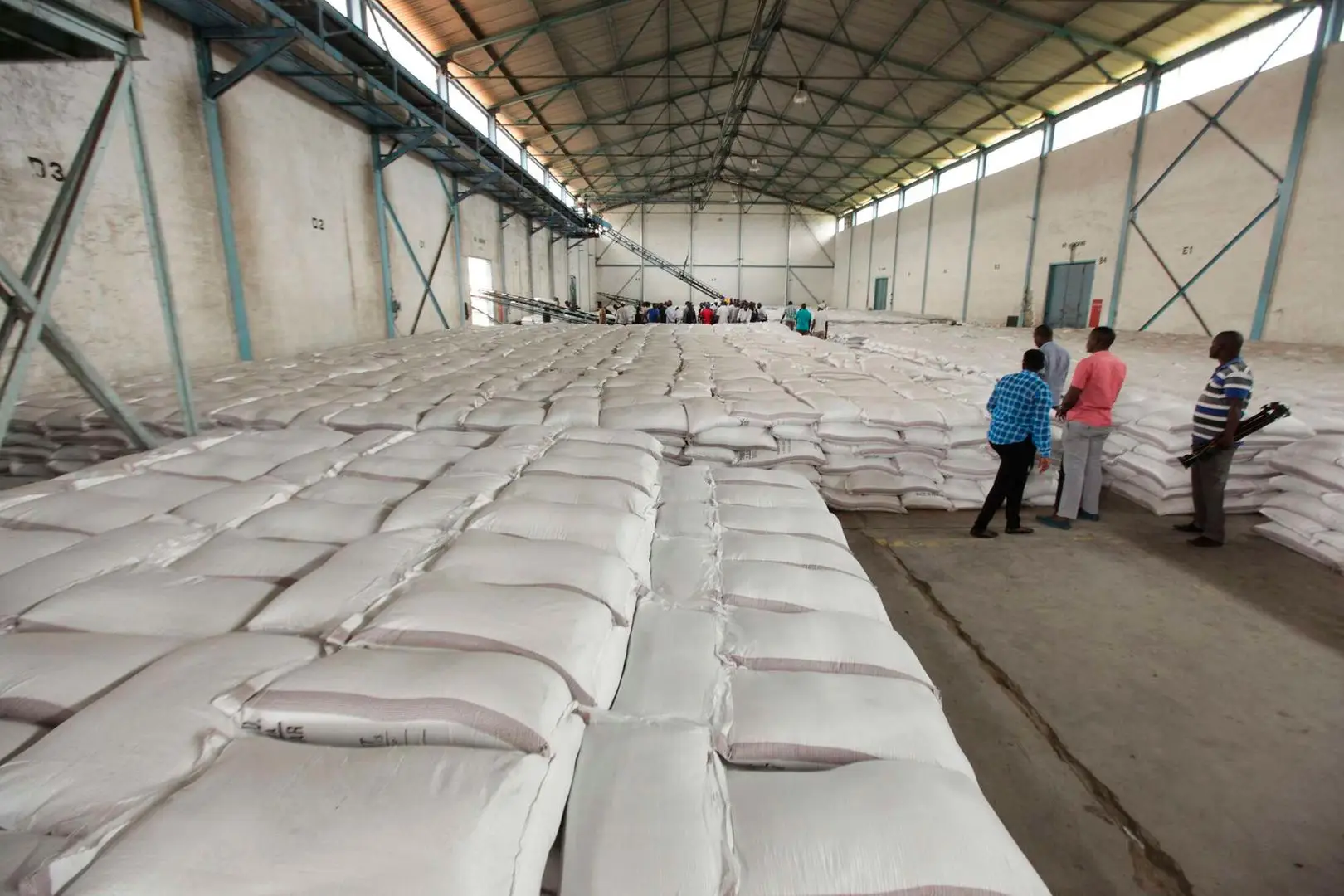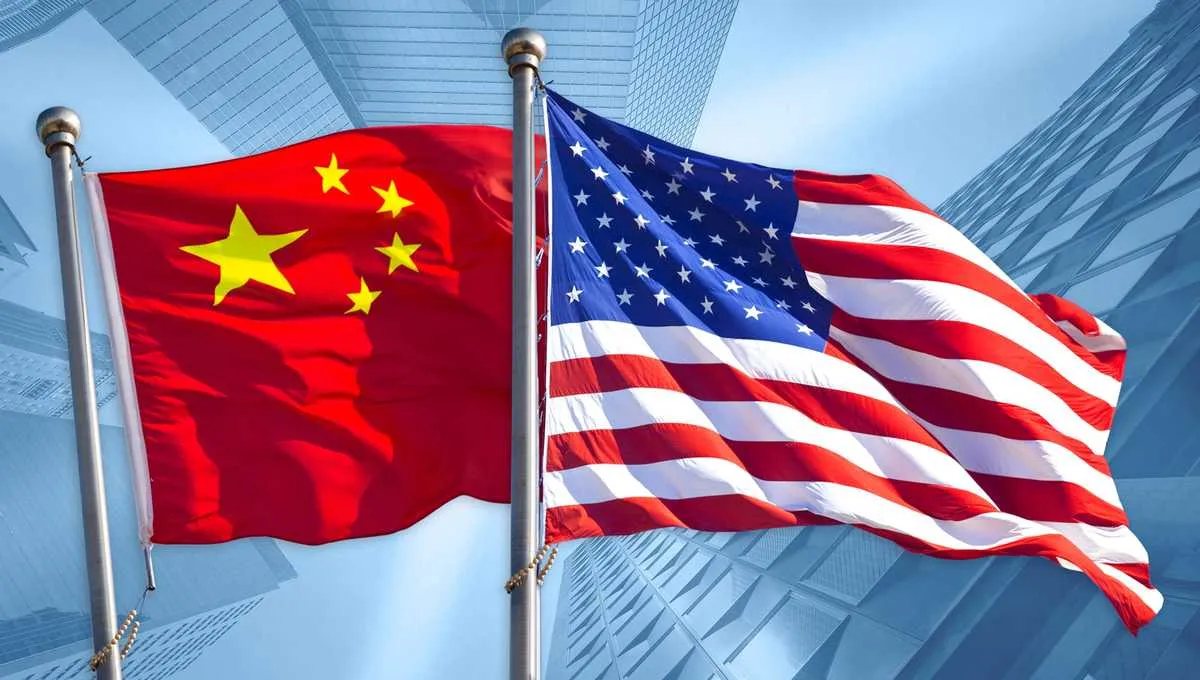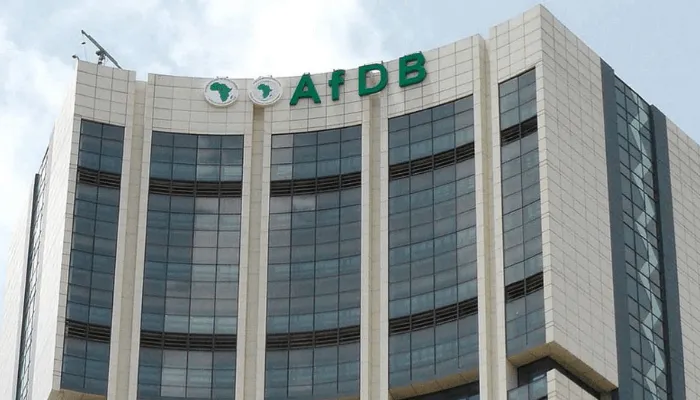A fresh warning from the United States Department of Agriculture’s Foreign Agricultural Service has cast a spotlight on Kenya’s sugar sector, predicting a sharp 19.8 percent drop in domestic sugar output for the 2025/2026 marketing year. Production is forecast to fall from 810,000 metric tonnes in 2024/2025 to just 650,000 metric tonnes, due to shrinking cane acreage, aging plantations, and severe weather disruptions. With local mills preparing for routine maintenance closures this season, retailers are bracing for price hikes, while policymakers scramble to secure additional imports before gaps in supply translate into widespread shortages.
Shrinking Cane Acreage and Aging Fields
Over the past decade, Kenya’s sugarcane belt in the Western and Lake Victoria regions has seen its planted area contract from around 220,000 hectares to a projected 150,000 hectares in the coming marketing year. Much of this decline stems from fragmented smallholdings—approximately 93 percent of Kenya’s cane comes from some 320,000 small‐scale farmers working plots of less than one hectare each. Rising land values near urban fringes have tempted growers to sell off parts of their fields, while lack of access to affordable credit has limited replanting efforts.
Compounding the acreage squeeze is the natural aging of sugarcane stands. Mature plantations yield far more per hectare than new sprouts, but many of Kenya’s fields now fall below the eight‑year threshold for peak productivity. Cane yields—historically between 56 and 70 tonnes per hectare—plummeted to an average of 51 tonnes per hectare in 2024/2025 after an extended dry spell delayed maturation and triggered water stress during key growth phases. In parts of Kisumu and Migori counties, some farmers reported yields dipping below 45 tonnes per hectare, well under the national average, as unpredictable rains curtailed irrigation options.
Mill Maintenance and Capacity Utilization
Five familiar names dominate Kenya’s sugar milling landscape: Nzoia, Chemelil, Mumias (currently under receivership), West Kenya, and Sony, among others. Of the 17 operational mills, four remain state‐owned, while private players have taken up the mantle of modernization. Government mills, burdened by outdated equipment and costly debt, struggle to extract more than 5.6 percent sugar from each tonne of cane, compared with an average 10 percent extraction rate at private facilities—nearly twice the efficiency.
Annual maintenance shutdowns, often spanning six to eight weeks, further tighten the supply tap just when domestic demand peaks. In January 2025, local ex‐factory sugar prices jumped by 5 percent to around Ksh 6,569 per 50 kg bag, with wholesale and retail prices following suit. Retailers reported average shelf‐prices climbing to Ksh 157 per kilogram, up from Ksh 149 per kilogram in December. With mills racing to refurbish boilers, replace worn rollers, and clear aged filtration systems, pocket volumes of raw sugar are expected to dip before repairs come online in late spring.
Import Window and Trade Policy
To stabilize supply, the government has signaled an intention to boost imports by nearly 38 percent, from 435,000 metric tonnes in 2024/2025 to around 600,000 metric tonnes in the new year. Kenya’s trade agreements under the Common Market for Eastern and Southern Africa (COMESA) and East African Community (EAC) allow duty‐free imports up to 350,000 metric tonnes per annum; beyond that threshold, sugar faces punitive tariffs of up to 100 percent unless a special waiver is granted. The existing safeguard on duty‐free imports—extended through November 2025—will expire soon, leaving room for fresh negotiations on quota volumes and tariff bands.
Regional suppliers stand ready to fill the gap. Uganda, Tanzania, and Zambia offer lower‐cost sugar, thanks to newer mills and favorable climatic conditions this season. But reliance on imports carries its own risks: foreign exchange outflows, shipping disruptions, and potential delays in customs clearance can all conspire to keep local shelves bare. Traders warn that a late start to import programmes could see temporary stockouts in Nairobi and Mombasa supermarkets, just as household consumption cycles ramp up ahead of festive seasons.
Rising Demand and Consumption Patterns
Kenya’s appetite for sugar continues to grow, driven by rising disposable incomes and an expanding hospitality sector. The USDA projects consumption will climb to 1.25 million metric tonnes in 2025/2026, up from roughly 1.23 million tonnes in the previous year. In addition to household tea and coffee rituals, sugar powers a network of bakeries, confectioners, and juice bars that have proliferated in urban centers. Two‐thirds of retail sugar is sold in 1 kg sachets through kiosks and corner shops, where margins are razor‐thin and price swings translate immediately into shrunken profits or surcharges to end‐users.
Small cafés and street vendors—who often purchase sugar by the kilogram from local depots—report that every shilling added to input costs chips away at their bottom line. “When sugar costs Ksh 160 per kilo, we either raise our beverage prices or accept lower margins,” explains one Nairobi café owner. In tourist destinations like Mombasa, hotels anticipate sugar shortages could force menu adjustments or pass costs onto guests, just as the high season approaches.
Government Interventions and Cane Development
Aware of the strategic importance of the sugar sector—an industry that employs over half a million people directly and indirectly—the Ministry of Agriculture and Livestock Development has launched a cane rehabilitation fund to assist smallholders in replanting aging fields. Grants of up to Ksh 200,000 per hectare are available for new high‐yielding, disease‐resistant varieties developed by the Kenya Sugar Research Institute. Pilot irrigation schemes in Homa Bay and Busia counties, backed by concessional loans, aim to offset rainfall variability and secure harvests through dry spells.
In parallel, the State Department for Crop Development rolled out a subsidized fertilizer programme in February 2025, targeting 50,000 cane farmers with discounted inputs. Early assessments indicate a 15 percent improvement in early growth rates on fields where farmers participated, though concerns remain about delayed deliveries and misallocation of supplies.
Private Sector Innovation
Private millers have seized the moment to gain market share. West Kenya Sugar Company recently commissioned a new cogeneration plant that feeds surplus steam back into the grid, reducing energy costs and bolstering local electricity supply. Chemelil Sugar Company has partnered with fintech firms to pilot mobile payment systems that guarantee prompt payouts to farmers—cutting cash‐flow delays from weeks to mere days. These initiatives have drawn in fresh cane supplies from growers once hesitant to plant, confident that harvest proceeds will arrive on time.
Aggressive outreach by mill extension officers, who provide agronomic advice and inputs on credit, has helped stabilize cane availability through the leanest months. At least one private miller now offers packaged credit lines for farm equipment and rainwater‐harvesting tanks, recognizing that resilience at the farm level translates into more consistent throughput at the factory gates.
Climate Risks and Future Yields
Climate change remains a looming specter over Kenya’s sugar sector. Long‐term projections indicate that erratic rainfall patterns could slash water tables in traditional cane belts, exposing fields to recurring drought stress. Researchers at the Sugar Research Institute have identified new high‐biomass varieties capable of tolerating up to six months of dry conditions, but widespread adoption hinges on seed distribution and farmer training.
Conversely, heavy rains and flooding—such as those seen during the El Niño season of 2024—can waterlog fields, increasing mushy cane losses and promoting fungal diseases. Millers have reported spikes in sucrose inversion rates after prolonged rains, leading to lower extraction yields. Enhanced drainage infrastructure and canopy management practices are now under trial to mitigate these losses, though funding remains a bottleneck for smallholder cooperatives.
Economic Implications and Fiscal Pressures
A sugar deficit of some 200,000 tonnes carries a hefty price tag. At current import parity levels, Kenya could spend upwards of $100 million additional foreign exchange to fill the gap. This burden arrives alongside a broader trade deficit and rising public debt, which as of mid‑2024 stood at over Ksh 10.6 trillion. Policymakers must balance the immediate need to keep kitchens stocked against long‐term goals of self‐sufficiency and value‐chain development.
Fiscal measures on the table include a temporary sugar levy earmarked for sector revitalization, though consumer groups warn that any extra tax risks stoking inflationary pressures on low‐income households. Other proposals call for scrapping the safeguard tariff on non‑COMESA imports after November 2025, replacing it with a more flexible quota mechanism tied to domestic production performance.
Regional Dynamics and Export Opportunities
While Kenya grapples with a deficit, neighboring Tanzania and Uganda are reporting surpluses, thanks to newer mills and favorable weather. Excited by domestic shortfalls, these countries are eyeing Kenya’s market—so long as logistics corridors remain unclogged. Efficient rail links along the northern corridor could bring Tanzanian sugar to Nairobi at competitive rates, but poor infrastructure and border‐post delays often offset any price advantage.
On the export front, Kenyan growers dream of niche markets for specialty sugars—such as organic and muscovado varieties—targeted at health‐conscious consumers abroad. Pilot shipments to European artisan confectioners have shown promising margins, but scaling such exports will require strict quality controls and certification processes that many small mills are not yet equipped to meet.
Looking Ahead: Strategies for Stability
Kenya’s sugar sector stands at a crossroads. Immediate relief through imports must be matched with bold domestic reforms: concerted replanting campaigns, mill modernization, better water management, and more nuanced trade policies that reward production growth rather than penalize it. Collaboration between government, private millers, smallholder cooperatives, and development partners will be crucial to bridge the gap between supply and demand without saddling consumers with crippling costs.
In practical terms, stakeholders suggest the following priorities for the year ahead:
Accelerate replanting of at least 20,000 hectares of idle or mature cane fields through targeted grants and micro‑credit.
Fast‑track mill upgrades at the four state‑owned facilities, either via public‑private partnerships or outright privatization, to improve extraction rates and energy efficiency.
Streamline import quotas and customs processes to ensure timely arrival of duty‑free sugar during production troughs, while extending the safeguard mechanism only where necessary.
Scale irrigation pilots in high‑potential districts, leveraging community‑managed schemes that blend government funding with farmer contributions.
Promote niche export lines for high‑value sugars, backed by certification support and bundled logistics solutions to break into premium markets.
Conclusion
As the 2025/2026 marketing year unfolds, Kenya’s sugar industry faces its sternest test in years. A nearly 20 percent drop in output, coupled with rising household and industrial demand, threatens to leave retailers scrambling and consumers paying more for a staple commodity. Yet within this challenge lies an opportunity: to galvanize long‑overdue sectoral reforms, harness private‑sector dynamism, and solidify a roadmap toward sustainable, self‑reliant sugar production. With decisive action on acreage restoration, mill efficiency, and balanced trade measures, Kenya can not only avert a crippling shortage but also emerge stronger—transforming its sugarcane heartland into a model of modern, climate‑smart agriculture.
Ready to take your career to the next level? Join our dynamic courses: ACCA, HESI A2, ATI TEAS 7 , HESI EXIT , NCLEX – RN and NCLEX – PN, Financial Literacy!🌟 Dive into a world of opportunities and empower yourself for success. Explore more at Serrari Ed and start your exciting journey today! ✨
photo source: Google
By: Montel Kamau
Serrari Financial Analyst
6th May, 2025
Article, Financial and News Disclaimer
The Value of a Financial Advisor
While this article offers valuable insights, it is essential to recognize that personal finance can be highly complex and unique to each individual. A financial advisor provides professional expertise and personalized guidance to help you make well-informed decisions tailored to your specific circumstances and goals.
Beyond offering knowledge, a financial advisor serves as a trusted partner to help you stay disciplined, avoid common pitfalls, and remain focused on your long-term objectives. Their perspective and experience can complement your own efforts, enhancing your financial well-being and ensuring a more confident approach to managing your finances.
Disclaimer: This article is for informational purposes only and does not constitute financial advice. Readers are encouraged to consult a licensed financial advisor to obtain guidance specific to their financial situation.
Article and News Disclaimer
The information provided on www.serrarigroup.com is for general informational purposes only. While we strive to keep the information up to date and accurate, we make no representations or warranties of any kind, express or implied, about the completeness, accuracy, reliability, suitability, or availability with respect to the website or the information, products, services, or related graphics contained on the website for any purpose. Any reliance you place on such information is therefore strictly at your own risk.
www.serrarigroup.com is not responsible for any errors or omissions, or for the results obtained from the use of this information. All information on the website is provided on an as-is basis, with no guarantee of completeness, accuracy, timeliness, or of the results obtained from the use of this information, and without warranty of any kind, express or implied, including but not limited to warranties of performance, merchantability, and fitness for a particular purpose.
In no event will www.serrarigroup.com be liable to you or anyone else for any decision made or action taken in reliance on the information provided on the website or for any consequential, special, or similar damages, even if advised of the possibility of such damages.
The articles, news, and information presented on www.serrarigroup.com reflect the opinions of the respective authors and contributors and do not necessarily represent the views of the website or its management. Any views or opinions expressed are solely those of the individual authors and do not represent the website's views or opinions as a whole.
The content on www.serrarigroup.com may include links to external websites, which are provided for convenience and informational purposes only. We have no control over the nature, content, and availability of those sites. The inclusion of any links does not necessarily imply a recommendation or endorsement of the views expressed within them.
Every effort is made to keep the website up and running smoothly. However, www.serrarigroup.com takes no responsibility for, and will not be liable for, the website being temporarily unavailable due to technical issues beyond our control.
Please note that laws, regulations, and information can change rapidly, and we advise you to conduct further research and seek professional advice when necessary.
By using www.serrarigroup.com, you agree to this disclaimer and its terms. If you do not agree with this disclaimer, please do not use the website.
www.serrarigroup.com, reserves the right to update, modify, or remove any part of this disclaimer without prior notice. It is your responsibility to review this disclaimer periodically for changes.
Serrari Group 2025





